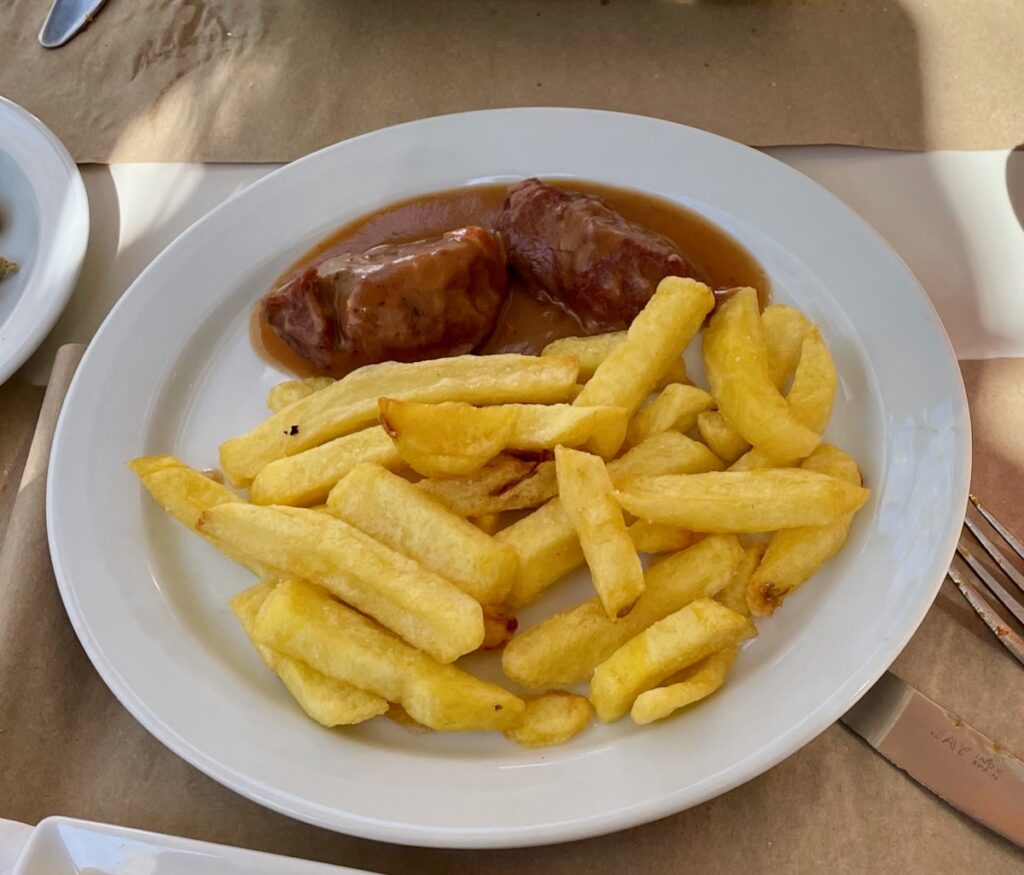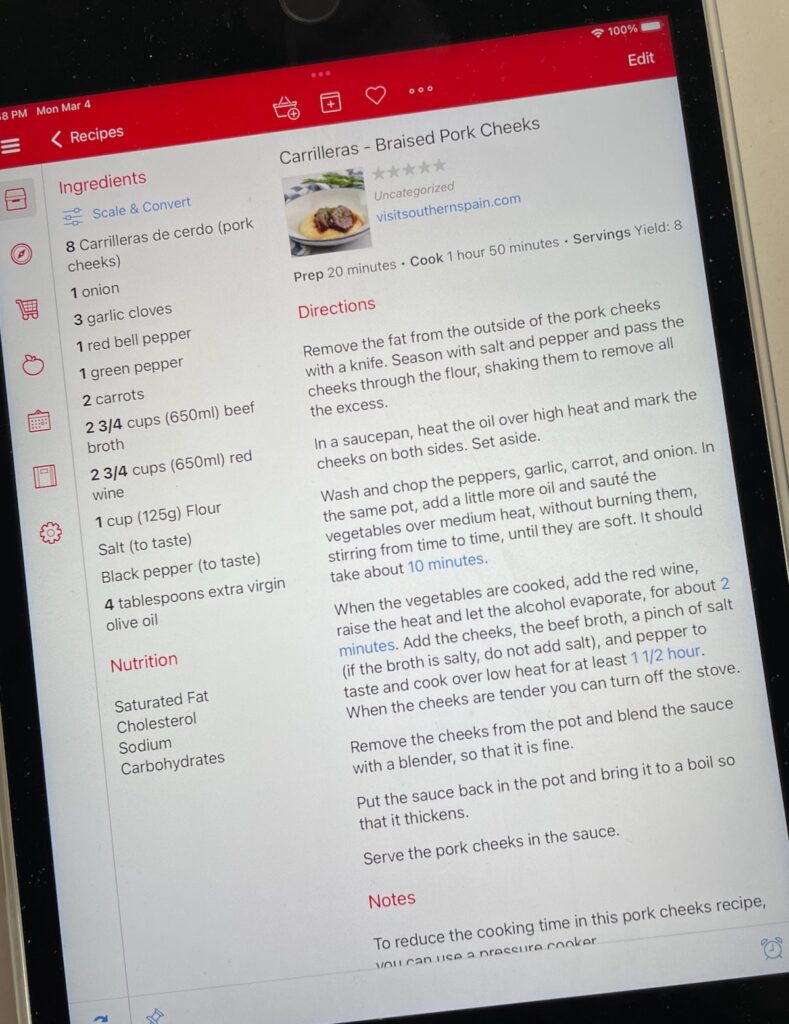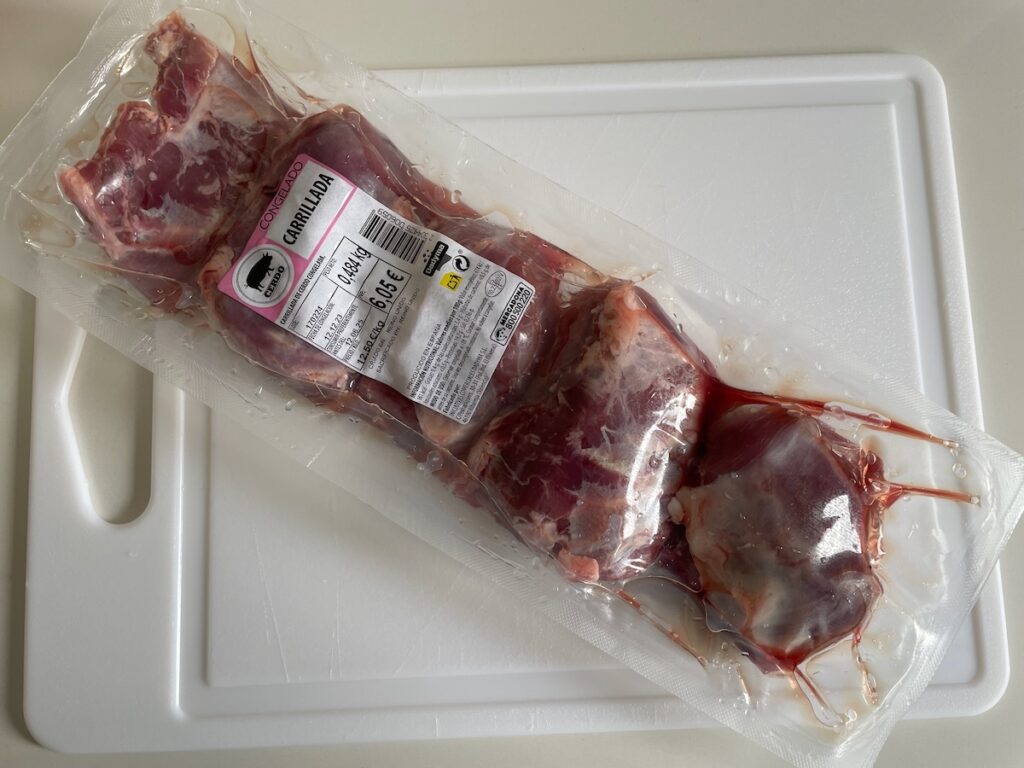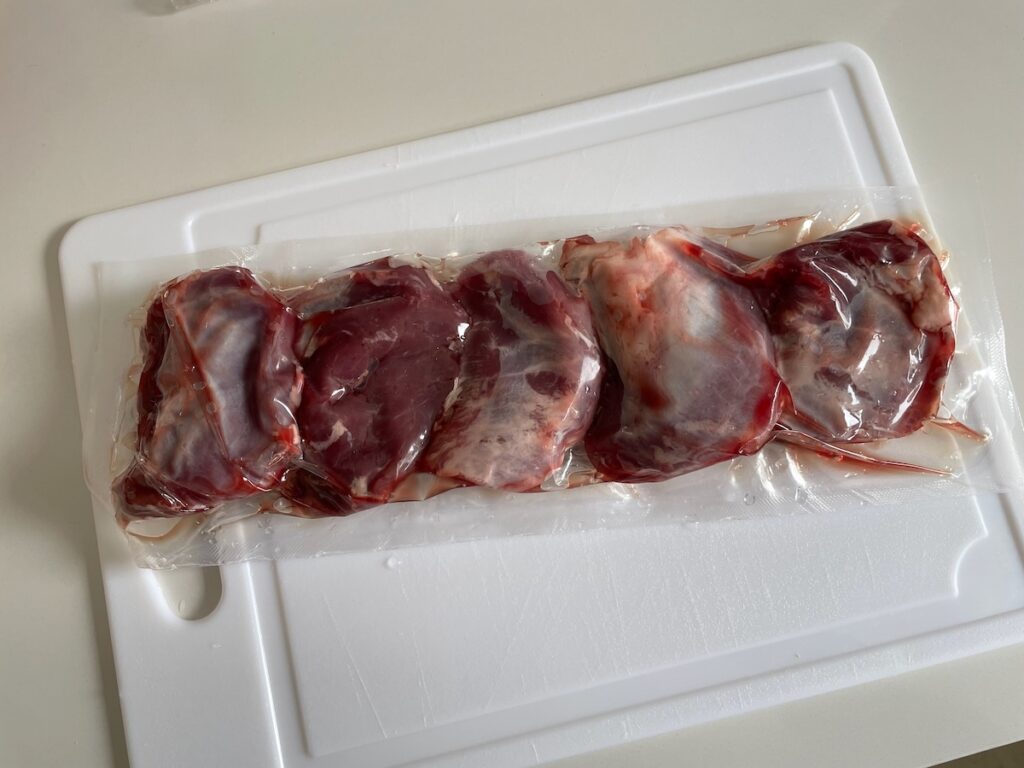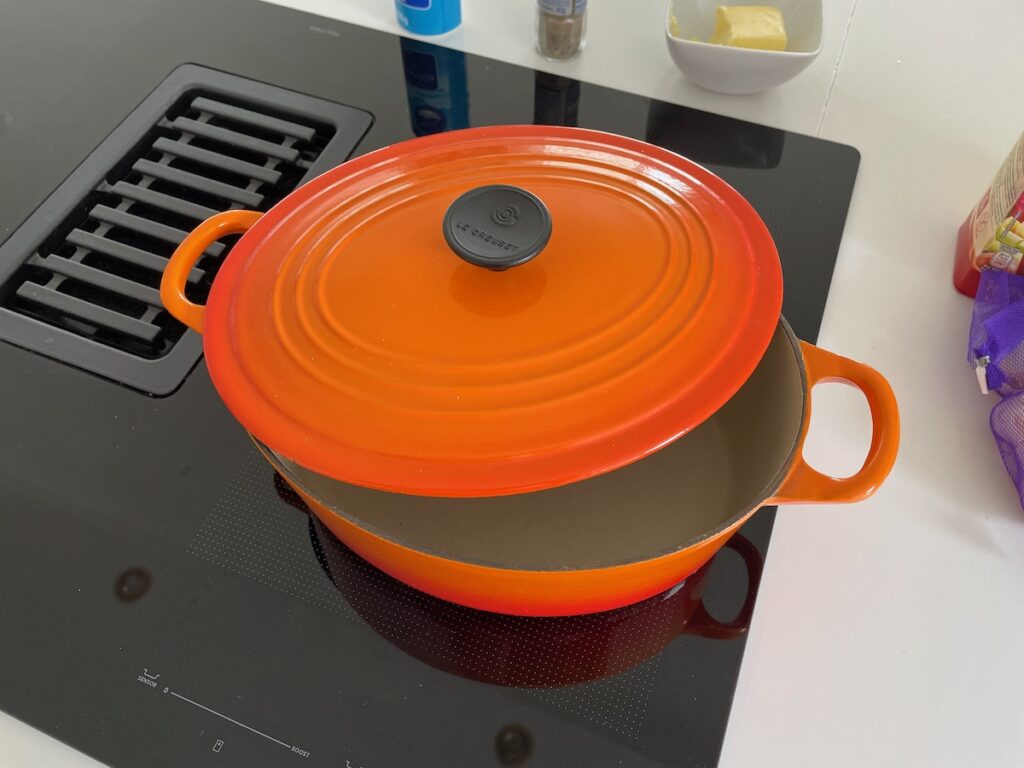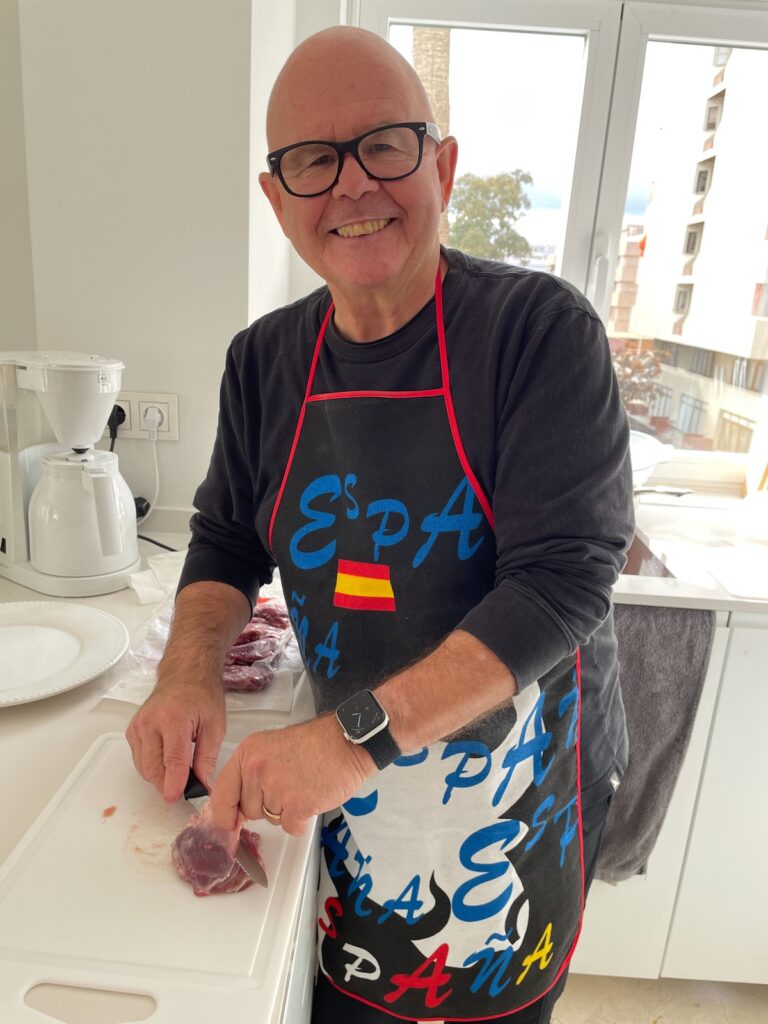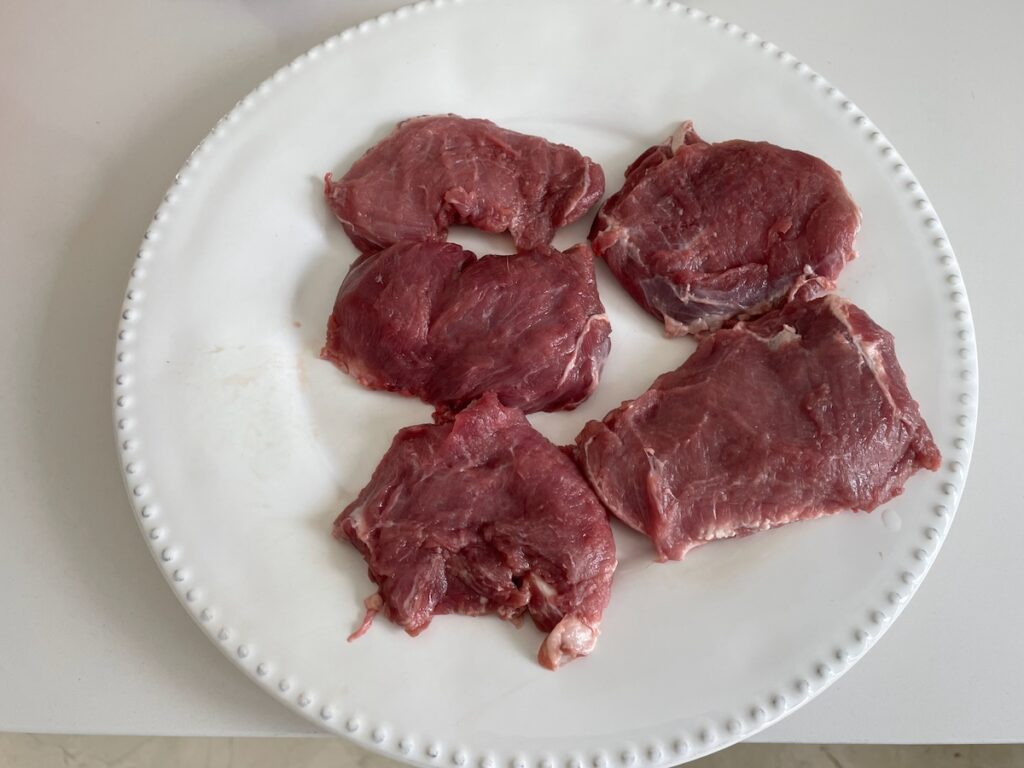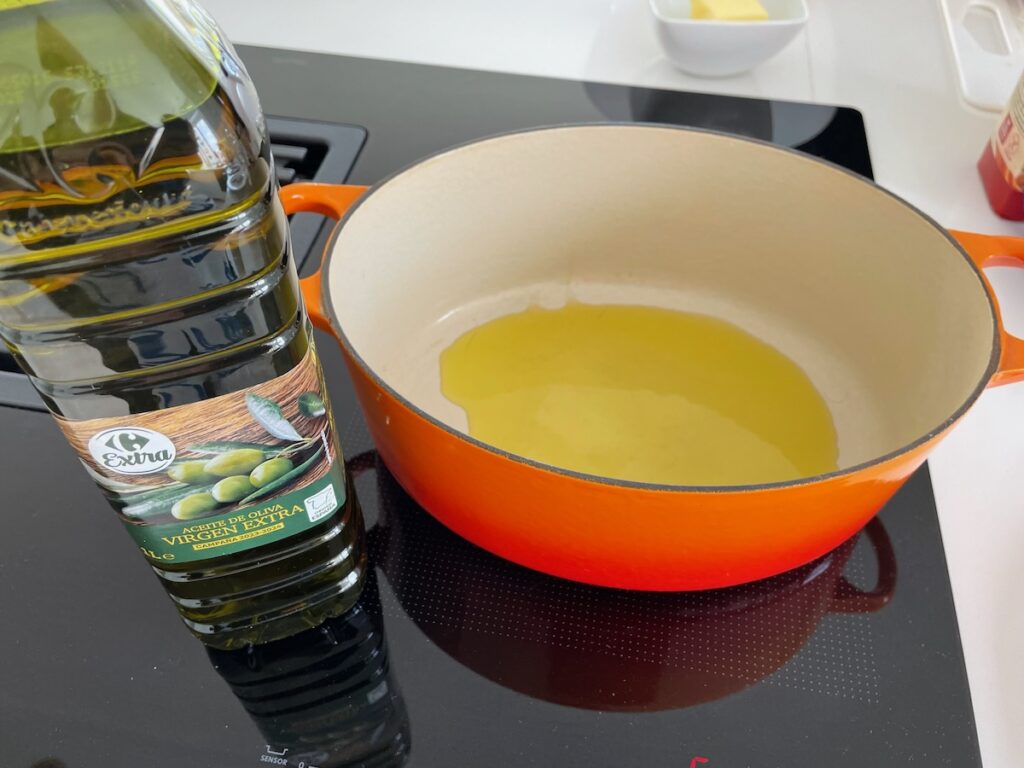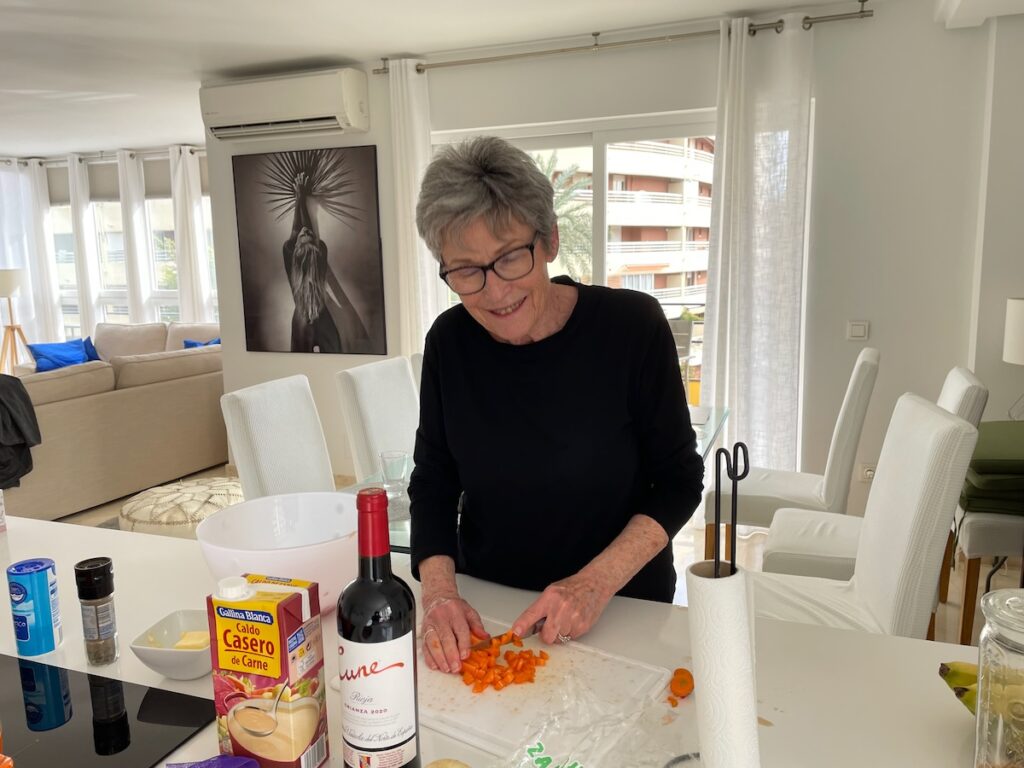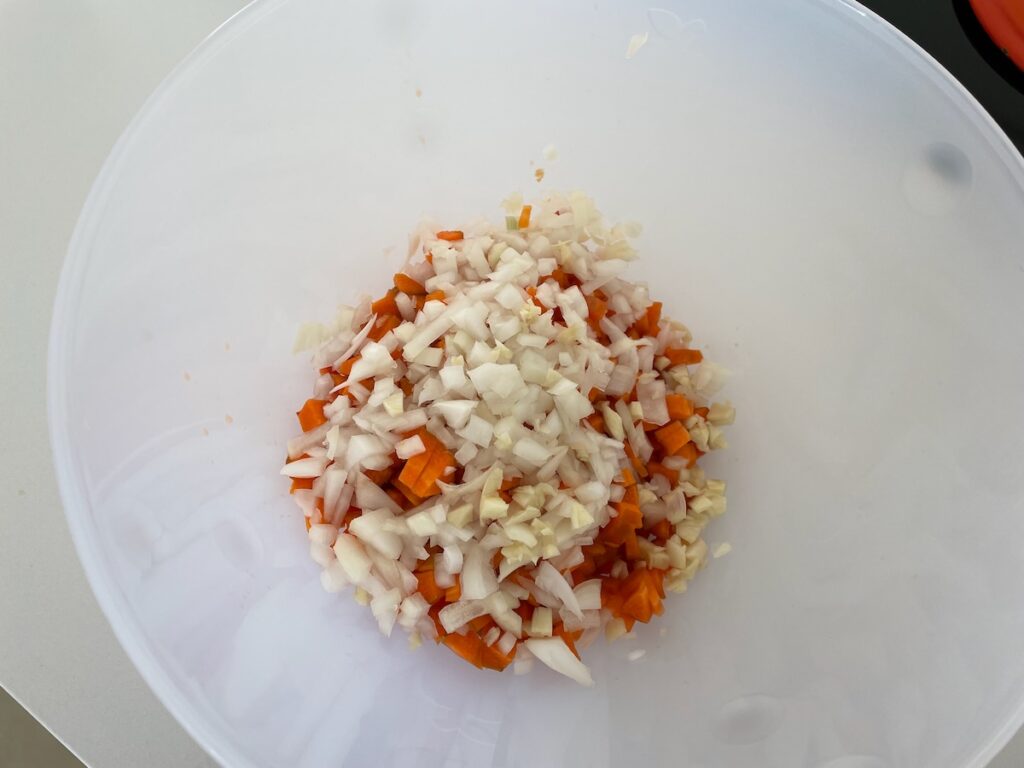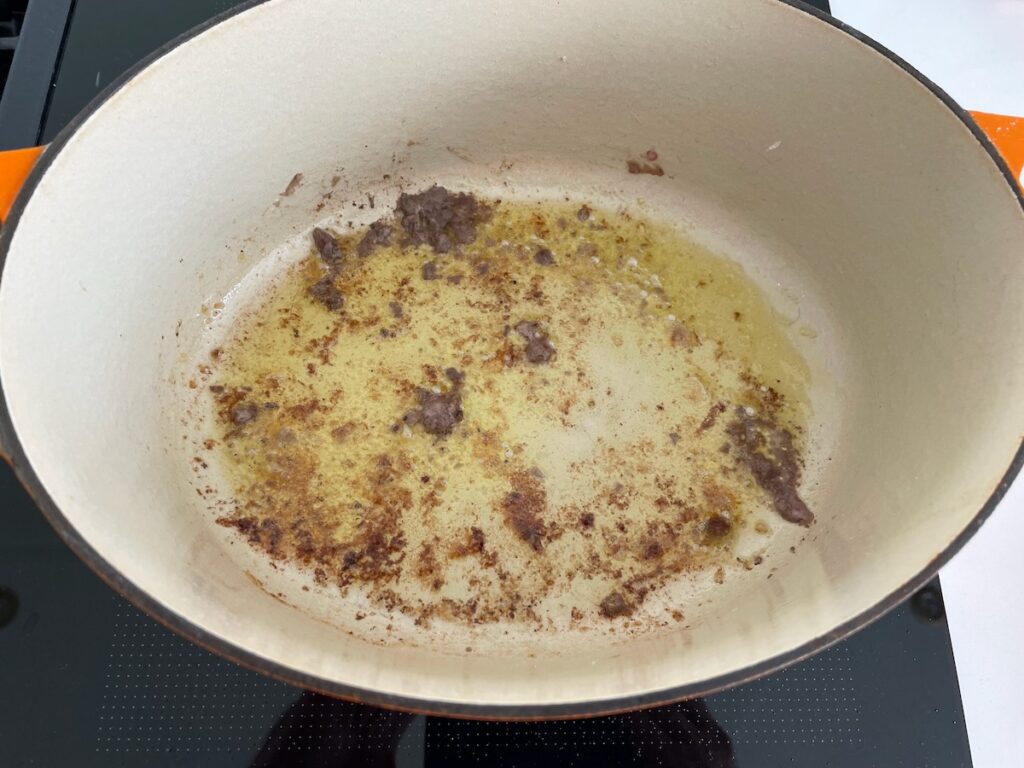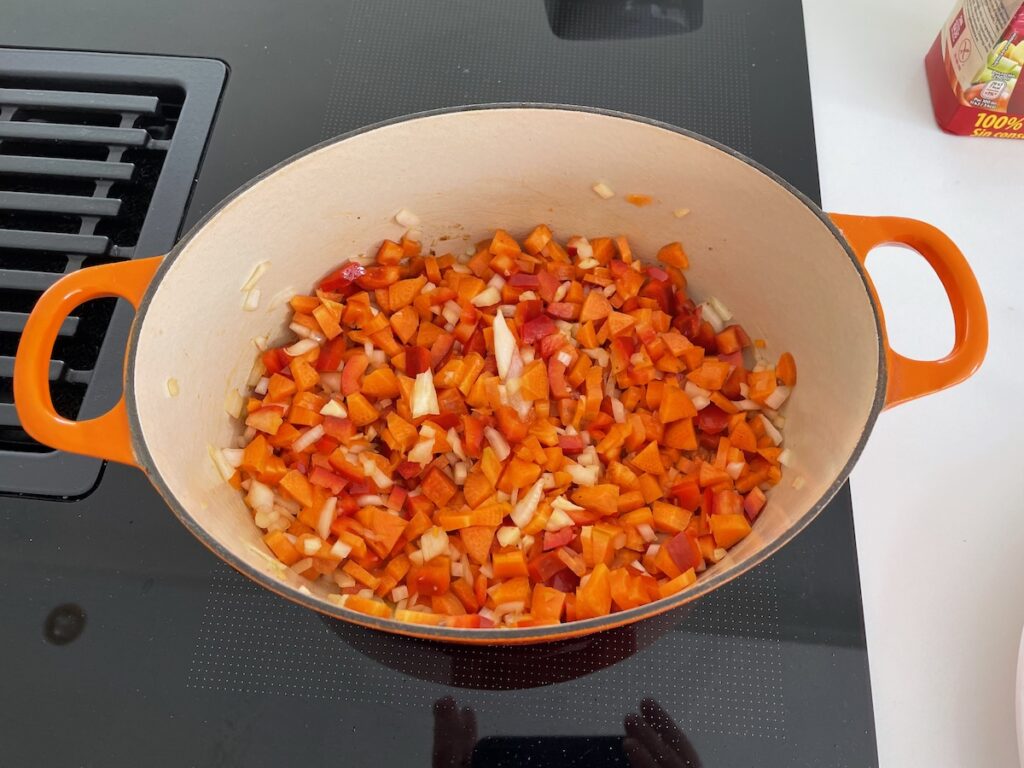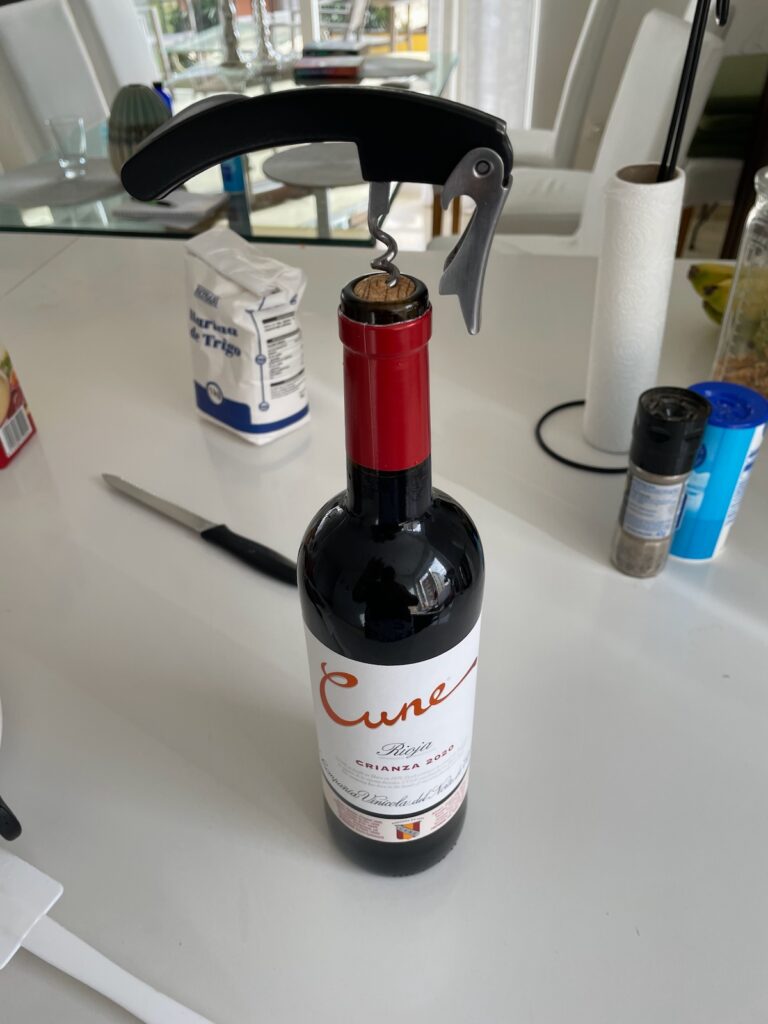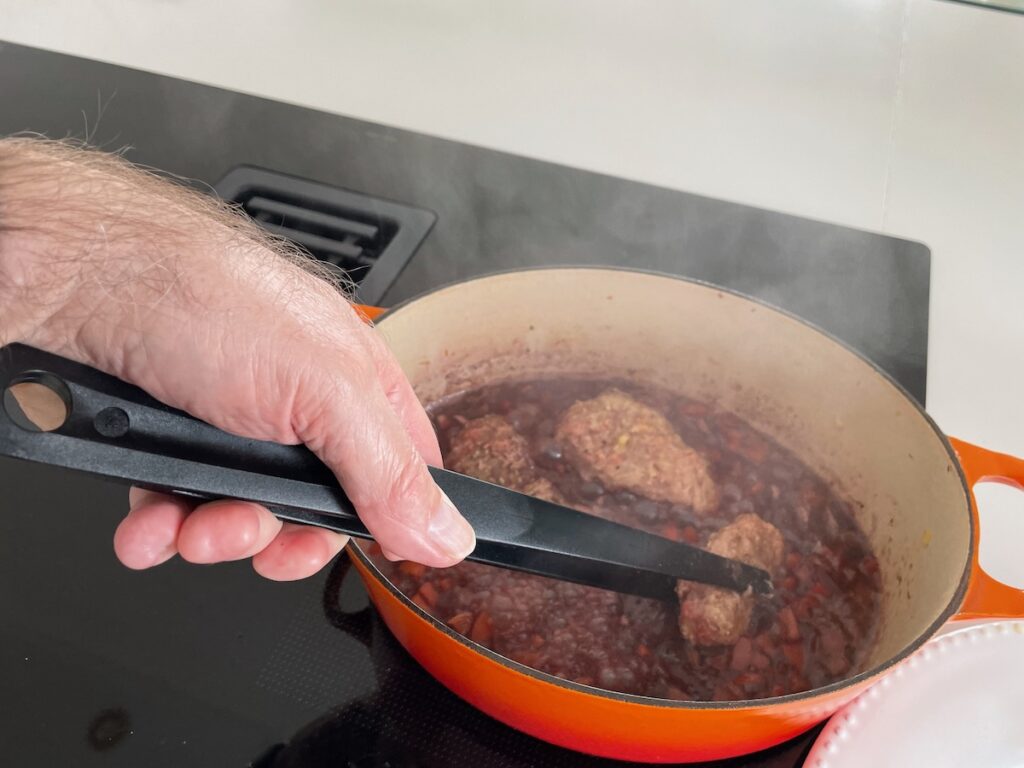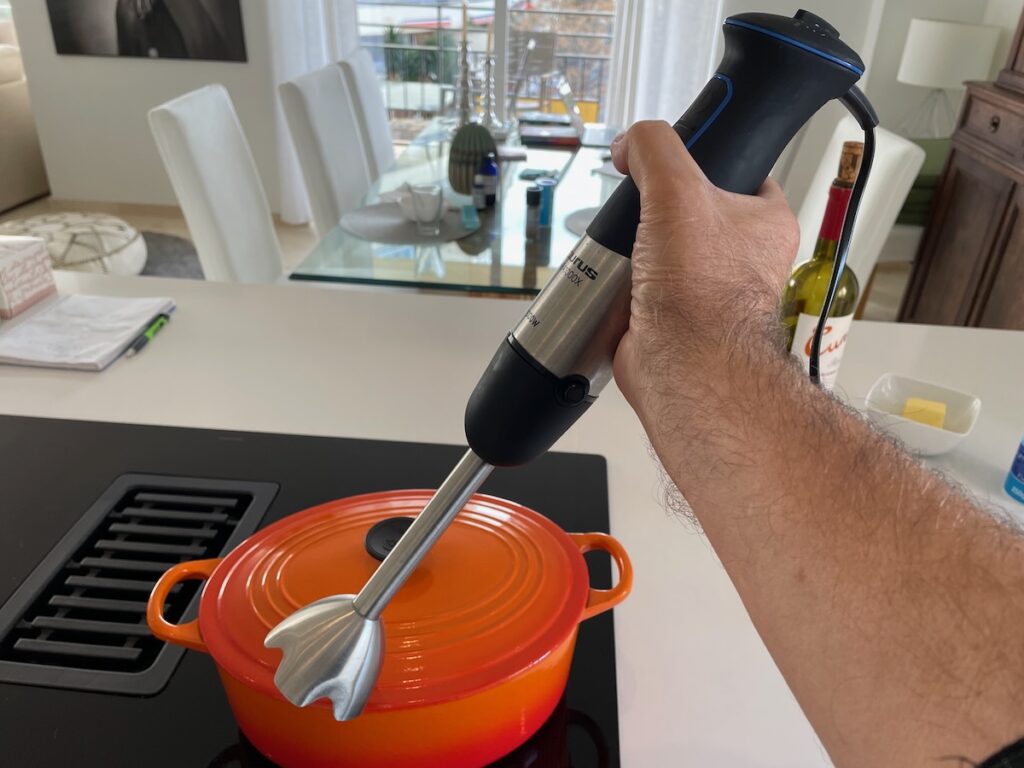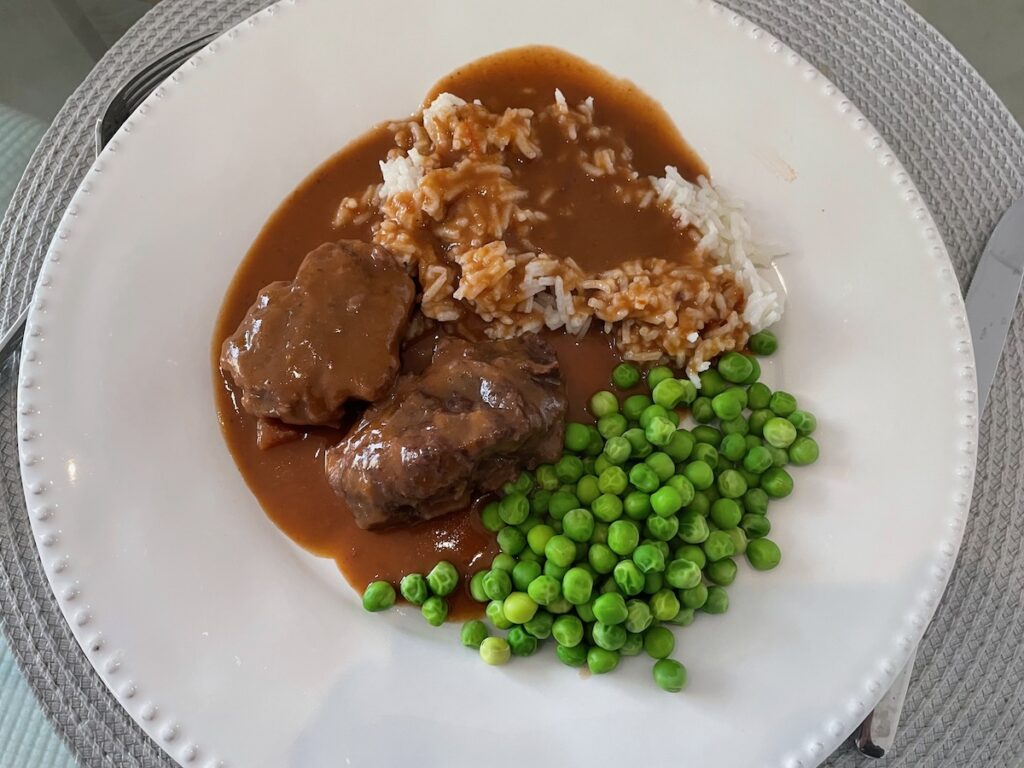We both enjoy Spanish cuisine. I’m not even sure how I would describe it to you, other than it offers unique dishes, most with what I would call delicate flavours. I say this because I had to think about it a couple of weeks ago when we had drinks with a couple who followed my blog and decided to come here for a winter getaway.
They mentioned that they were surprised that the Spanish cooking wasn’t spicy… which it definitely isn’t. I think they were expecting something like what they’ve experienced in other Spanish-speaking countries like Mexico. This got me thinking about how I would describe Spanish cooking. Perhaps a blog article for another day. But cooking did become front and centre in my mind.
My last report about having a fun lunch down on the beach might not have struck you as being “about absolutely nothing at all”. Fair enough, but I think this entry does demonstrate that very low standard that I’m trying to set this year. 🙂 I am going to tell you all about a meal I cooked. How’s that for mundane?
A Favourite Spanish Dish
And that meal was one of my favourite Spanish dishes, “Carrilladas”. The dish is essentially just braised pork cheeks… Not butt cheeks… The other ones. 🙂 I can even remember the first time I had Carrilladas. It was in a lovely bodega near the Flamenco Museum in Seville. As I recall, it was one of those “well I have no idea what that is so let’s try it” experiences. And I became a fan for life.
And once again this year when we went out to eat, it was amongst the first dishes that I ordered. And then a little serendipity got involved. While we were out grocery shopping at our local “Mercadona Supermercado” I was checking out the frozen lamb and beside it in the cooler were the pork cheeks that are used in this dish. I grabbed some and searched for a recipe as soon as I got home.
I am a relentless photo taker, as you may have figured out. I went back through my photos in search of one of my Carrilladas meals and ultimately found one that I could use… This one. Not the most elegant presentation but this is often how it will be served if you ask for a “Media Racione” or “Half Ration” – The Carrilladas, along with some proper English-style chips.
The bottom line is that I made it recently and it turned out beautifully… Or I probably would not be sharing this post. 🙂 So, I’m going to walk you through the making of this delicious dish.
Let’s Get Cookin’
This is the menu from which I ordered them for the first time this year. As you can see, they are available in all of the three sizes frequently offered for a dish in a proper Spanish restaurant. Hmmmmm… I see some other interesting Spanish dishes here that I have tried before, like “Rabo del Toro”. But I digress. Let’s get to it!
The recipe I downloaded and used to make the dish… Pretty straightforward.
And here are the cheeks, ready to go.
The backside of the package gives you a better idea of what they look like.
The rest of the ingredients.
Fortunately, the place we rented had this lovely Le Creuset Dutch oven – the perfect vessel in which to make this dish.
Task number one, get rid of all the silver skin – a very onerous task with a dull knife. That’s a grimace, not a smile. 🙂
And here they are ready to cook.
First, we pour some olive oil into the pan and heat it up.
The cheeks are coated in flour and thrown in the pot to be browned.
They are looking good.
Meanwhile, my semi-enthusiastic sous chef is cutting up the vegetables.
The vegetables are cut up very small as you can see because they will be puréed at the end of the cooking process.
The cheeks are taken out and set aside.
The vegetables are then added to the drippings.
After about 10 minutes of cooking, they are done.
Next up, pour in about half a bottle of a nice red Rioja and deglaze.
You can get this wine in our LCBO at home. A decent, but middling Rioja.
The deglazing has begun.
And now the deglazing is complete.
The cheeks are returned to the pot.
Half a litre of beef stock is poured in on top of them.
It is all brought to a boil and then covered.
Then the whole thing cooks on low heat for about an hour and a half. I used setting number two on this induction stove.
And there it is, looking very delicious.
The cheeks are removed, and then you use a hand mixer to purée all the vegetables in the liquid. I added a butter and flour paste to thicken the sauce and give it a nice sheen.
The result, melt in your mouth tasty pork cheeks in a beautifully rich sauce.
When I get home, I am going to go to our local provider of quality meats and ask if I can get some of these little bits of goodness so that I can make this dish for friends and family. I don’t often make recommendations but if you manage to get your hands on some pork cheeks you might want to try this recipe yourself. They are a melt-in-your-mouth delight.


